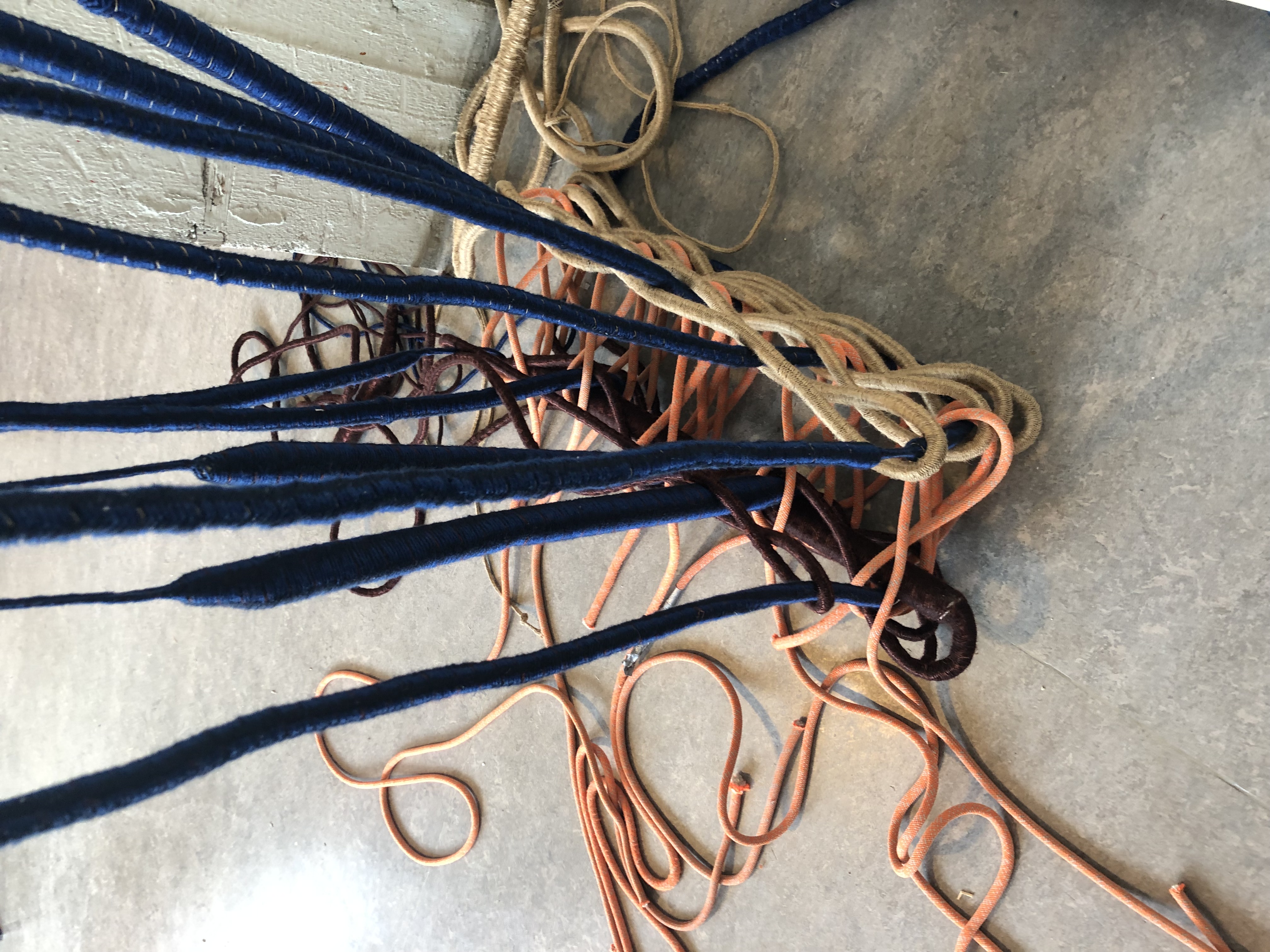Transitional Structures - part 02
Transitional Structures is an investigation into weaving fragments that serve as adjustable, spatial partitions. The fluid and dynamic character of the woven fragments introduces an engaging, adaptable building approach, allowing us to prolong the lifespan of our buildings.
Our demands and requirements of spaces changes over time. Consequently, we tend to build, destruct and re-build again and again, while neglecting serious environmental consequences. Where conventional building approaches rely on static and rigid building materials that require large amounts of finite resources, Transitional Structures suggest an approach of transition: Weaving spatial elements that respond to our increasing demand for adaptable infrastructures.
The settlement of our initial nomadic culture, lead our textile technique based building methods shift to an industry, implementing rigid and monumental constructions. Our building culture mutated from alterable surfaces to static blocks. In an attempt to reverse this material transformation, the question rises: How can we step away from contemporary static materials to enable a more flexible and engaging use of our existing structures?
Braiding and weaving a malleable construction material, lays the foundation for a transformative building approach. The act of weaving becomes a moment of intertwining existing structural elements with a materialised extension of ourselves. In making full use of the performative qualities of textiles, woven compositions continue to grow within spaces. Transitional Structures enables buildings to gradually transition in both their material composition, form and behaviour, while facilitating new spatial configurations.
YEAR:
FIELD:
MATERIALS:
2023
TEXTILE ARCHITECTURE
WOOL
JUTE
PAPER YARN
LINEN







